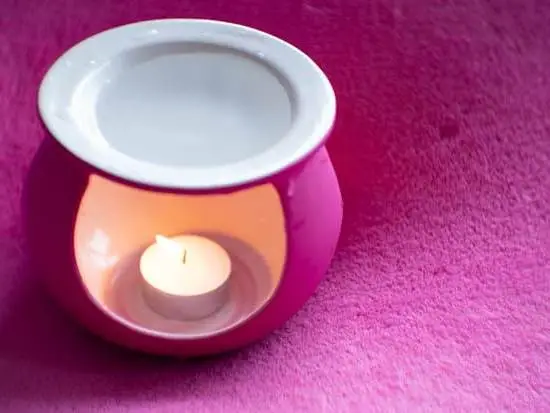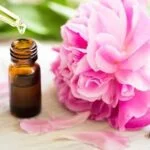Are you curious about how to use frankincense oil for aromatherapy? Frankincense oil has been used for centuries and is known for its therapeutic properties, making it a popular choice for aromatherapy.
In this article, we will explore the history of frankincense oil, its aromatherapy benefits, and the importance of using pure, high-quality oil for effective results. Whether you are new to aromatherapy or looking to enhance your current practice, understanding how to utilize frankincense oil can greatly benefit your well-being.
Frankincense oil has a rich history dating back to ancient civilizations such as Ancient Egypt and Mesopotamia. Its use in traditional medicine and religious ceremonies has contributed to its reputation as a valuable essential oil.
In the world of aromatherapy, frankincense oil is prized for its calming and grounding effects, making it an ideal choice for promoting relaxation and emotional balance. However, it is crucial to ensure that you are using pure and high-quality frankincense oil in order to experience its full potential in aromatherapy.
In the following sections, we will delve into the scientific explanations behind aromatherapy and the specific ways in which frankincense oil can be used for this purpose. Additionally, we will discuss best practices for safely using frankincense oil, as well as tips on choosing the right variety of oil for your needs.
Whether you are interested in creating custom blends or exploring case studies of individuals benefiting from frankincense oil aromatherapy, this article aims to provide comprehensive information on incorporating frankincense oil into your aromatherapy practice.
The Science Behind Aromatherapy
Aromatherapy is the use of essential oils to promote physical and psychological well-being. The practice has been around for centuries, with essential oils like frankincense oil being used for their therapeutic properties. But how exactly does aromatherapy work? The answer lies in the olfactory system, which is responsible for our sense of smell.
When we inhale the aroma of essential oils, odor molecules travel through the nose and stimulate the olfactory receptors. These receptors then send signals to the brain’s limbic system, which is involved in regulating emotions, memory, and stress response. This is why certain scents can evoke specific emotional or physiological responses. Scientific research has shown that certain essential oils, including frankincense oil, can have a calming effect on the nervous system when inhaled.
Studies have also demonstrated that frankincense oil contains compounds with anti-inflammatory and analgesic properties. When used for aromatherapy, these compounds can help alleviate pain and reduce inflammation in the body. This scientific evidence supports the use of frankincense oil for aromatherapy purposes, particularly for stress relief and emotional balance.
| Aromatherapy | Frankincense Oil |
|---|---|
| Physiological well-being | Compounds with anti-inflammatory properties |
| Emotions | Limbic system stimulation by odor molecules |
| Olfactory System | Responsible for sense of smell |
Different Ways to Use Frankincense Oil for Aromatherapy
Frankincense oil has been widely used for centuries in aromatherapy for its numerous benefits, including its ability to promote relaxation, reduce stress, and improve overall emotional well-being. When using frankincense oil for aromatherapy, there are several different methods that can be employed to experience its therapeutic effects.
One of the most popular ways to use frankincense oil for aromatherapy is through inhalation. This can be done through diffusion, where a few drops of the oil are added to a diffuser filled with water, and the aromatic steam is released into the air.
Another inhalation method is steam inhalation, where a few drops of frankincense oil are added to a bowl of steaming hot water and then inhaled with caution by covering the head with a towel over the bowl.
In addition to inhalation methods, frankincense oil can also be used topically for aromatherapy purposes. It’s important to note that pure essential oils should never be applied directly to the skin undiluted. Instead, they should be diluted with a carrier oil such as jojoba or coconut oil before being gently massaged into the skin. This allows for both absorption of the oil and inhalation of its aroma during application.
Lastly, incorporating frankincense oil into bath and body products is another effective way to use it for aromatherapy. Adding a few drops of the oil to bath salts, body scrubs, or lotions can provide a fragrant and soothing experience that enhances relaxation and emotional balance.
| Methods | Usage |
|---|---|
| Inhalation | Diffusion or steam inhalation |
| Topical Application | Dilution and massage |
| Bath & Body Products | Addition to bath salts, body scrubs or lotions |
Best Practices for Using Frankincense Oil Safely
Dilution Guidelines for Topical Use
When using frankincense oil for aromatherapy, it is important to dilute the essential oil before applying it to the skin. This helps to reduce the risk of skin irritation and sensitivity. A general rule of thumb is to mix 1-2 drops of frankincense oil with a carrier oil such as coconut oil, almond oil, or jojoba oil. This will help to ensure that the essential oil is safely and effectively absorbed by the skin without causing any adverse reactions.
Potential Side Effects and Precautions
While frankincense oil offers numerous benefits for aromatherapy, it is essential to be aware of potential side effects and precautions. Some individuals may experience allergic reactions or skin sensitivities when using undiluted or low-quality frankincense oil. It is also important to avoid ingesting frankincense oil as it can be toxic when consumed internally. Pregnant women and individuals with certain medical conditions should consult with a healthcare professional before using frankincense oil for aromatherapy.
Safety Tips for Diffusing Frankincense Oil
Diffusing frankincense oil is a popular way to enjoy its aromatic benefits, but it is crucial to do so safely. When using an essential oil diffuser, always follow the manufacturer’s instructions and guidelines. Use the recommended amount of frankincense oil in the diffuser, typically 5-10 drops depending on the size of the room.
Avoid prolonged exposure to diffused frankincense oil, especially in small or poorly ventilated spaces. Taking these safety measures will help ensure a pleasant and beneficial aromatherapy experience with frankincense oil.
Choosing the Right Frankincense Oil
When using frankincense oil for aromatherapy, it is essential to select the right type of oil to ensure maximum benefits. Here are some tips on choosing the right frankincense oil for your aromatherapy needs:
- Understanding different varieties of frankincense oil: There are several types of frankincense oil available, each with its own unique aroma and therapeutic properties. Some popular varieties include Boswellia serrata, Boswellia carterii, and Boswellia frereana. It’s important to research and understand the characteristics of each variety before making a purchase.
- How to identify pure, high-quality oil: When purchasing frankincense oil for aromatherapy, it’s crucial to look for purity and quality. Look for oils that are labeled as “100% pure” or “therapeutic grade.” Additionally, consider purchasing from reputable brands or suppliers that have a track record of providing high-quality essential oils.
- Recommended brands for aromatherapy use: While there are numerous brands offering frankincense oil, some have gained a reputation for producing top-quality oils specifically suited for aromatherapy. Popular brands such as doTERRA, Young Living, and Plant Therapy offer pure and potent frankincense oils that are suitable for aromatherapy purposes.
By following these guidelines in selecting the right frankincense oil for your aromatherapy practice, you can ensure that you are getting the best possible results from this ancient and revered essential oil.
Aromatherapy Blends With Frankincense Oil
Complementary Essential Oils for Stress Relief
When it comes to creating aromatherapy blends with frankincense oil, it’s important to consider the other essential oils that can complement its properties. For stress relief, consider combining frankincense oil with lavender, chamomile, or bergamot. These essential oils are known for their calming and relaxing effects, and when used together with frankincense oil, they can enhance the overall soothing experience.
Creating Custom Blends for Relaxation and Meditation
To create a custom blend for relaxation and meditation, experiment with combining frankincense oil with sandalwood, patchouli, or ylang-ylang. These essential oils are often used in aromatherapy for their grounding and centering effects, making them excellent choices for promoting a sense of calm and tranquility during meditation or relaxation practices.
Tips for Blending Frankincense Oil With Other Scents
When blending frankincense oil with other scents, start by using a small amount of each essential oil and adjust the ratios based on your personal preferences. Keep in mind that some essential oils have stronger aromas than others, so it’s important to find a balance that works well for you. Additionally, consider the purpose of the blend and choose complementary scents that align with your specific aromatherapy goals.
By experimenting with different combinations of essential oils and paying attention to how they make you feel, you can create unique aromatherapy blends that incorporate the versatile benefits of frankincense oil. Whether you’re seeking stress relief, relaxation, or a sense of balance and harmony, custom blends offer a personalized approach to aromatherapy using frankincense oil as a key ingredient.
Case Studies and Personal Experiences
Many individuals have experienced the wonderful benefits of using frankincense oil for aromatherapy. From stress relief to emotional balance, the versatile oil has been proven to be effective for a wide range of purposes. Here are some case studies and personal experiences that demonstrate the positive impact of incorporating frankincense oil into your aromatherapy routine.
- One individual, Sarah, had been dealing with chronic stress and anxiety for years. After learning about the benefits of aromatherapy, she began using frankincense oil in a diffuser at home. She reported feeling a sense of calm and relaxation after just a few minutes of inhaling the aroma. Sarah found that incorporating frankincense oil into her daily routine significantly reduced her stress levels and improved her overall well-being.
- Another example is Tom, who struggled with insomnia and restless nights. He started adding a few drops of diluted frankincense oil to his evening bath and also applied it topically before bed. Tom noticed that he was able to fall asleep faster and stay asleep throughout the night. The soothing properties of frankincense oil helped him achieve a more restful sleep, leading to improved energy levels during the day.
- A mother named Maria used frankincense oil in combination with lavender and bergamot oils to create a custom blend for her children’s bedtime routine. She found that diffusing this blend in their bedroom helped create a peaceful environment, promoting relaxation and easing any bedtime resistance. Maria shared that aromatherapy with frankincense oil had become an essential part of their nightly wind-down process.
These personal experiences highlight the effectiveness of using frankincense oil for aromatherapy and how it can positively impact various aspects of one’s life. Whether it’s for managing stress, improving sleep, or creating a calming atmosphere, many individuals have found success in incorporating this ancient essential oil into their daily wellness routine.
Resources and Further Reading
In conclusion, incorporating frankincense oil into your aromatherapy practice can offer a multitude of benefits for both physical and emotional well-being. Whether you choose to diffuse the oil, apply it topically, or blend it with other essential oils, the versatility of frankincense oil makes it a valuable tool in promoting relaxation, reducing stress, and enhancing overall mood.
By understanding the science behind aromatherapy and following best practices for safe usage, you can fully harness the therapeutic potential of this ancient remedy.
When seeking out frankincense oil for aromatherapy, it is crucial to prioritize quality and purity. Look for reputable brands that offer pure, high-quality oil without any additives or fillers. Additionally, consider exploring different varieties of frankincense oil to find the one that resonates best with your senses and therapeutic needs. By choosing the right oil and using it safely and effectively, you can maximize the benefits of incorporating frankincense oil into your aromatherapy routine.
For those interested in delving deeper into the world of frankincense oil and aromatherapy, there are various resources available for further reading and exploration. Books, articles, websites, and professional organizations provide valuable information on the history of frankincense oil, its uses in aromatherapy, as well as practical guidance on creating custom blends and incorporating it into daily routines.
Whether you are a beginner or an experienced practitioner, these resources can serve as invaluable tools for expanding your knowledge and expertise in utilizing frankincense oil for aromatherapy. As you continue to explore this ancient practice, may you discover new ways to benefit from the therapeutic properties of frankincense oil for your own health and wellness journey.
Frequently Asked Questions
How Do You Use Frankincense for Aromatherapy?
Frankincense can be used for aromatherapy by diffusing its essential oil in a room, adding it to a warm bath, or mixing it with a carrier oil for a soothing massage. Its woody, earthy scent is said to promote relaxation and reduce stress.
How Do You Use Frankincense Oil for Respiratory?
For respiratory issues, frankincense oil can be added to a bowl of hot water for steam inhalation or mixed with a carrier oil and applied to the chest as a homemade chest rub. It is believed to help relieve congestion and support healthy breathing.
What Is the Best Carrier Oil to Mix With Frankincense Essential Oil?
The best carrier oils to mix with frankincense essential oil include jojoba oil, coconut oil, almond oil, or olive oil. These carrier oils are nourishing for the skin and help to dilute the potent essential oil before applying it topically.

Are you looking for a natural way to improve your health and wellbeing?
If so, aromatherapy may be the answer for you.





